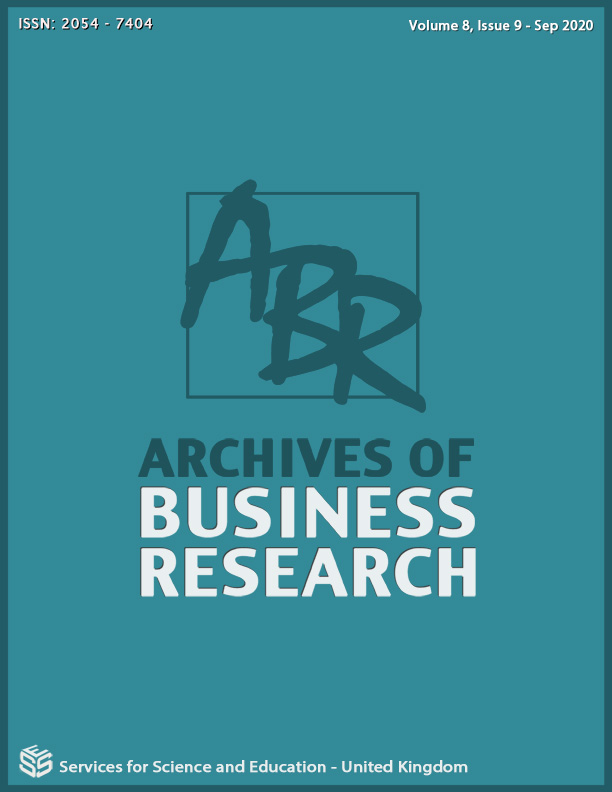Assessment of Financial Performance of Agricultural Cooperative Unions: The Case of West Harerghe Zone, Oromia Region, Ethiopia
DOI:
https://doi.org/10.14738/abr.89.9059Keywords:
Financial performance, agricultural cooperative unions, western HarargheAbstract
Financial statement analysis involves comparing cooperative union performance and evaluating trends in the unions’ financial position over time. Managers use financial statement analysis to identify situations demanding attention; potential lenders use financial analysis to determine whether the union is creditworthy; and stockholders use financial analysis to help predict future earnings, dividends, and free cash flow. This study is conducted on Assessment of Financial performance of Agricultural Cooperative unions: the Case of West Harerghe zone, Oromia region, Ethiopia. The general objective of this study was to evaluate financial performance of agricultural cooperative union. For this study, the researchers used both primary and secondary sources of data taken from purposively selected two cooperative unions (i.e. Burka Galeti and Chercher Oda bultum) since they do have audited financial statements out of five unions found in western Haraghe. The study also used FGD and interview with fiancé managers and employees of the union for further explanation. Based on the financial statement analysis the researchers found that the agricultural cooperatives are efficient and effective in asset utilization, activity and debt equity management ratios. However, the financial statement analysis showed that the current asset ratio is below the industry standard that cannot cover its short term liabilities form its current asset section of the balance sheet. Moreover, the profitability ratio of the unions revealed that the agricultural cooperative unions are efficient to make profit but the margin of profit is below 25% that cannot make the union successful to cover all the incidental costs that are borne within short and long-term periods. The OLS model revealed that quick, fixed asset turnover, total asset turnover, inventory turnover and gross profit margin ratios are significantly and positively affecting ROA. As a result, the researchers recommend that the agricultural cooperative unions are expected to improve its effective and efficient management of the day to day activities of the union. Furthermore, the unions are expected to higher managers who have the caliber to manage each and every activities of the union and who are visionary to bring success for the unions.
References
Bringham, E.F. and J.F. Houston, 1998. Ratio Analysis. In: Dryden Press (ed.), Fundamentals of Financial Management. The Dryden press, Orlando, Florida, U.S.A., pp. 70-93.
Boehlje, M., Dobbins, C., Miller, A., Miller, D & Barnard, F. (1999). Measuring & Analyzing Farm Financial Performance. Department of Agricultural Economics, Purdue University. Online:
Chukwu, S.K., 1990. Economics of the Cooperative Business Enterprise. Marburg, Germany.
Davidsson, P. (2005). Interpreting Performance in Small Business Research. Proceedings of the Strathclyde Entrepreneurship Research Workshop, Leeds, UK.
David Chesnick, D. (2006). Measuring cooperative performance,. Rural Business – Cooperative Service: USDA.
David S. Chesnick. (January 2000). Financial Management and Ratio Analysis For cooperative Enterprises: Research Report 175. Rural Business - Cooperative Service: U.S. Department of Agriculture
Emana, B. (2009). A path to economic and Social emporment in Ethiopia. Coop. Africa , 16. Frederick, Donald A. (1997). What are patronage refunds? United States: United States department of agriculture.
Garate M.R. 1997. Technical Efficiency in the Spanish Agro-industry. Journal of Agricultural Economics. Vol. 17, pp. 179-180.
Henrÿ, H. (2012). Guidelines for co-operative legislation (3rd ed.).International Labour Office. Geneva: ILO, 2012. Retrieved from http://www.ilo.org/wcmsp5/groups/public/--- ed_emp/---emp_ent/documents/publication/wcms_195533.pdf
Mckee, G. 2007. The Financial Performance of North Dakota Agricultural Cooperatives, Department of Agricultural Economics North Dakota State University, Agribusiness and Applied Economics Report No: 624.
Mckee, G. 2008. The Financial Performance of North Dakota Grain Marketing and Farm Supply Cooperatives, Journal of Cooperatives, 21, 15 – 34.
Nippierd, Anne-Brit (2002). The potential role of UN guidelines and the new ILO recommendation on the promotion of corporative. Paper for Expert Group Meeting on “Supportive Environment for Cooperatives: A Stakeholder Dialogue on Definitions, Prerequisites and Process of Creation” jointly organized by the Division for Social Policy and Development, United Nations and the Government of Mongolia, 15-17 May 2002, Ulaanbaatar, Mongolia.
Kowero G.S.1991. An Economic Evaluation of the Mobile Saw-milling Industry in Tanzania. In: Doss, Cheryl and Carol Olson (eds.). Issues on African Rural Development, Win Rock International Institute for Agricultural Development. Pp.468-469.
GeteneshSintayehu. 1988. Result Analyses and Result Comparison of Farmers Producers Cooperatives in the Highlands of Hararghe. Unpublished M.Sc. Thesis, Alemaya University of Agriculture, Ethiopia.
KebebewDaka, 1978. Cooperative movement in Ethiopia. M.Sc. Thesis, Addis Ababa University.
Kotler, P., 2003. Marketing Management. Delhi-India.
Mamoria, Satish, and Suri, 2003. Marketing Management. Sarojini Naidu Marg, Allah bad. New Delhi-India.
Gittinger, J.Price , 1982. Economic Analysis of Agricultural Projects. Second edition, The Johns
Hopkins University Press. Baltimore and London.
Wanyama, F. O. et al. (2008). “Encountering the Evidence: cooperatives and Poverty Reduction in Africa.” A Working paper on social and cooperative Entrepreneurship WP-SCE 08-02.
http://www.cooperatiefondernemen.be/WP/WP SCE 08-02.pdf (accessed on 03/11/2012). Investopedia.
Available. http://www.investopedia.com/terms/f/financialperformance.asp
Thukarama Rao M.E, (2005). Management Accounting: New Age International (P) Ltd. Publishers. New Delhi. 1st Ed






